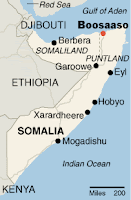
A job well done by the Indian Navy frigate INS Tabar in quashing an, no, 2 immediate attempts by the Somalian pirates on the merchant ships in the Gulf of Aden. The Somalian pirates are having a kill. Here is a little attempt to the understand the situation.
No one who could access internet and reach till this blog would need any introduction to the Somalian economy maybe a little bit help on geography. Somalia is located in the Horn of Africa with the Gulf of Aden to the north and the Indian Ocean to the east. It is bordered by Ethiopia to the west, Djibouti to the northwest, and Kenya to the southwest. Somalia has the longest coastline on the continent. A weak economy and government and a good strategic access to the Gulf of Aden which is at the mouth of the Red Sea leading to the Suez Canal – the gateway linking the east to the west has given opportunities to petty criminals to take merchant ships by surprise and get away with a quick loot.
The Somalian pirates are not expert long term sea farers or the glamorus characters we would imagine of the medeival european age. They are petty thugs who are natives of the coastland and natural fishermen who don’t see any prosepect for fishing anymore. They work for richer war lords.
Not all ships captured are used for claiming ransom money, some of the ships captured from China and Taiwan which are old and of lesser value are used for subsequent missions to venture deeper into the sea and returned to the crew once the bigger fish is caught.
A gunman on a pirate ship typically earns between $10,000 and $30,000 for a year’s work – a fortune in Somalia. With an exchange rate of 1425 SOS (Somalian shilling) to 1 USD a small bunch of pirates making somewhere from $2 million to $5 million of ransom money per vessel taken as hostage is a lifetime earning. They are becoming more organized which they were not when it began. The money is typically divided this way: 20 percent for their bosses, 20 percent for future missions (to cover essentials like guns, fuel and cigarettes), 30 percent for the gunmen on the ship and 30 percent for government officials. Yes, I don’t doubt the last one. With so much money involved it would not be possible for this nuisance to go on for so long without without the government turning a blind eye, for a fat-fee.
It has gone to an extent where being a pirate in the town of Boosaso is a cool thing to do. They are the sudden super rich who could buy any luxury around. Women there seek the company of such successful pirates. The fresh money has in fact grown a new town called new-Boosaso.
It is good to see that Indian Navy is actively taking care of the situation there and a welcome decision by UN giving official permission to continue the great work to make sure the maritime waters are safe for merchant vessels. India has done something that richer economies didn’t try to even when their ships were taken hostage. The international laws needs to be re-done to ensure safety and punishing pirates. Many a times the captured pirates are held for a few days and dumped on the nearest shore later due to lack of proper laws to handle them.
In a world economic crisis it will be worth spending a little gun powder by the ‘super powers’ to keep such menace under check saving time, resources and ransom money than camping for years in countries and spending money chasing mountain rats with little success.

